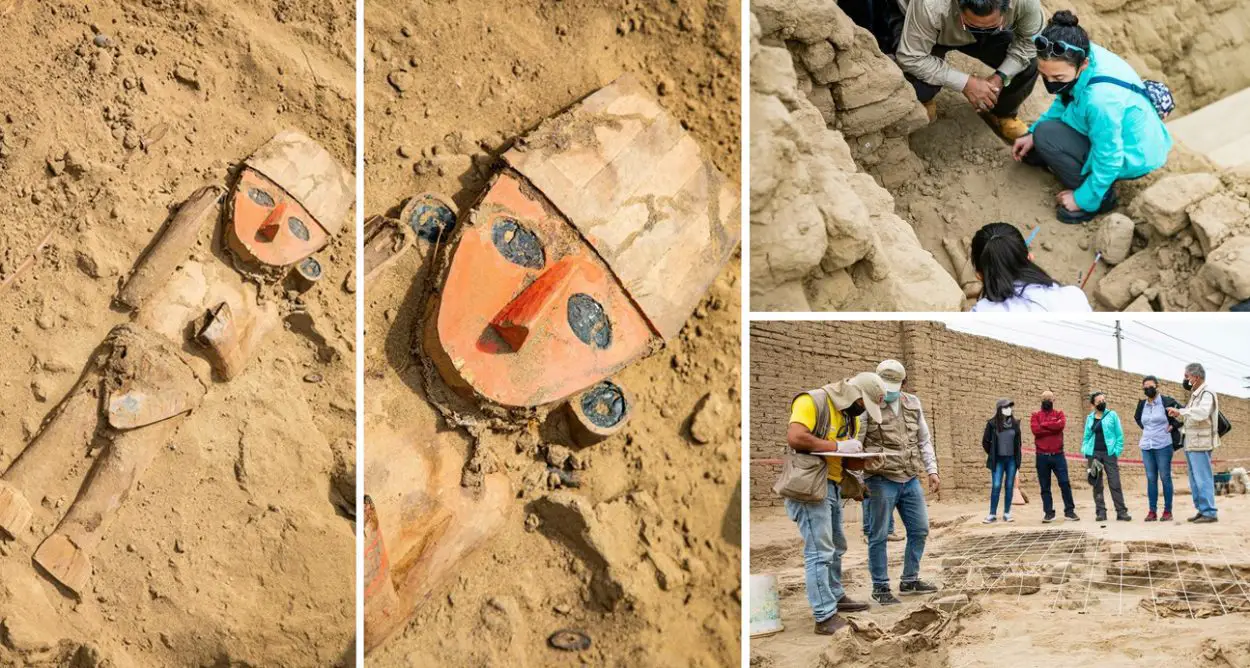Archaeologists have unearthed a wooden sculpture at Chan Chan, the Capital of the Chimú Kingdom.
The Chimú culture emerged around AD 850-900, having succeeded the Moche culture and controlled an area of 1,000 kilometres of coastline from Piura in the north to Paramonga in the south.
The Kingdom was centred on Chan Chan, a large adobe city that covered an area of 4942 acres, making the site one of the largest pre-Columbian cities in South America. The name of the site is probably derived from the Quingnam “Jiang” or “Chang” which means Sun, from which Chan-Chan would be literally: Sun-Sun.
Chan Chan consisted of nine large rectangular complexes (‘citadels’ or ‘palaces’), containing pyramidal temples, reservoirs, cemeteries, plazas, burial platforms, storerooms and living quarters for the city elite and royalty.
Excavations were part of the “Recovery of the Huaca Takaynamo” project that was conducting studies of Huaca Takaynamo north of the main complex, revealing a 47 cm by 16 cm wooden sculpture depicting a litter bearer of a ruler that is decorated with 7 vertical colour bands.
The sculpture has a flat oval face painted red with almond-shaped eyes and would have been decorated with mother-of-pearl plates fixed with black resin. The figure also has a triangular cut skirt decorated with small rectangular bands and wears a trapezoidal cap.
Archaeologists are yet to date the sculpture, but the form and art style indicates that it is early Chimú, between 850 and 1,470 years old, making it one of the oldest sculptures found at the site.
The researchers also uncovered a necklace made from nectandra seeds (a genus of plant in the family Lauraceae) and the remains of the original thread, in addition to a small black bag decorated with brown and white threads.
Arturo Paredes Núñez, head of the Pecach Research, Conservation and Enhancement Unit said: “Chimú wood carvings or sculptures are fixed or mobile. The former are documented at the entrance to some walled complexes of Chan Chan”.
Header Image Credit : Directorate of Culture of La Libertad







